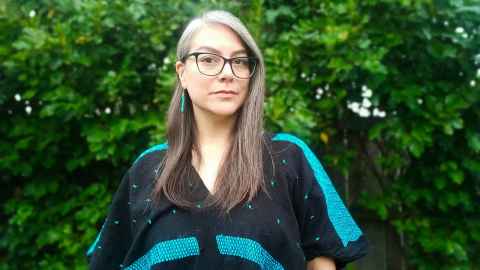Decolonising our Western approach to design
18 May 2022
We need to be alert to cultural appropriation, as do designers and design educators, says Dr Diana Albarrán González, who recently took up her role as deputy director of and lecturer in the Design Programme at the University of Auckland.

Dr Albarrán González is a Native Latin American design researcher who graduated with her PhD from the Māori and Indigenous faculty, Te Ara Poutama, at the Auckland University of Technology. Her research focused on the decolonisation of design in collaboration with Mayan weavers from Chiapas, Mexico, her birthplace.
That designers have profited from the designs of indigenous communities, without acknowledging or understanding the origins of those designs, or compensating communities who developed them, has been a controversial topic for some time now. Dr Albarrán González believes improvements are being made in the design sector in response, particularly in design education, but there is a long way to go.
Her own research involved learning backstrap loom weaving (jolobil) which she describes as a “transformative experience”. Learning it gave her a chance to experience the labour intensive and complex nature of the pre-colonial practice of her ancestors, the knowledge of which had been lost in her family.
Weavers require patience and concentration, and the practice “is quite meditative”, she says. As it is frequently done around family or in groups, it allows for intergenerational interaction and the sharing of knowledge which fosters weavers’ connection to their indigenous ancestry and heritage. This facilitates a sense of harmony, of well-being and a sense of belonging, she says.
Design programs normally have had a very Euro-anglo-centric perspective of design and comes very much from a Western education perspective. My research is about acknowledging that there are many histories of design, including indigenous design
These are not aspects of design as it has traditionally been taught but are important aspects of indigenous design that needs to be better understood by both design students and contemporary designers.
“Design programs normally have had a very Euro-anglo-centric perspective of design and comes very much from a Western education perspective. My research is about acknowledging that there are many histories of design, including indigenous design.”
“There have been many cases of cultural appropriation of indigenous textiles in Mexico for decades, but since 2015 this issue has become more visible in media, particularly of cases involving both fast fashion and individual designers.”
“Many of them will argue that they get inspiration from other cultures, but at the same time, these textiles, patterns and techniques are part of the cultural heritage of indigenous people and are recognised as part of the indigenous people's rights. Which is something I teach to my students.”
“This is important in Aotearoa, where we have seen many instances of cultural appropriation. We need to learn to better recognise and value Māori and Pacific designers, and support and work alongside them.”
It’s complex, she agrees. “Our legal systems are based on the individual ownership, on individual property rights, but indigenous peoples have a collective intellectual property.
“Challenging the legal aspect is one aspect of de-colonising design, but understanding indigenous design, what it means to the people creating it, is an important part of education, including design education.
“I approached textiles as a rich source of knowledge in my research. But as I teach our students, it's not appropriate to just go and get inspiration from other cultures in the world and use it as a designer, without engaging with the people who developed that design heritage, without understanding and respecting their artisanal heritage and what it means to them.”
Media contact
Margo White I Media adviser
Mob 021 926 408
Email margo.white@auckland.ac.nz